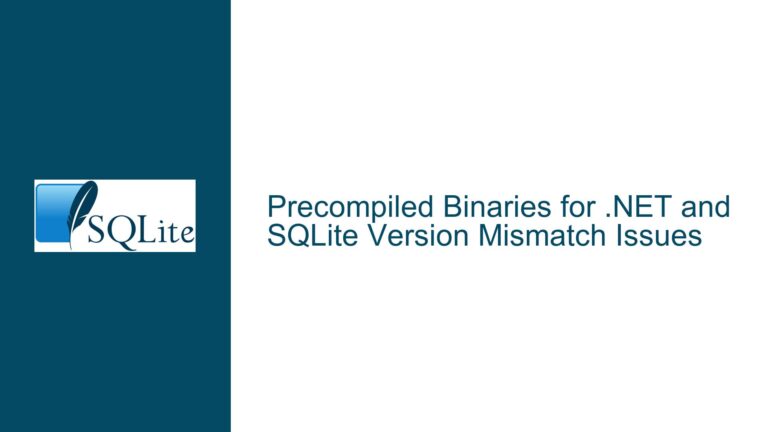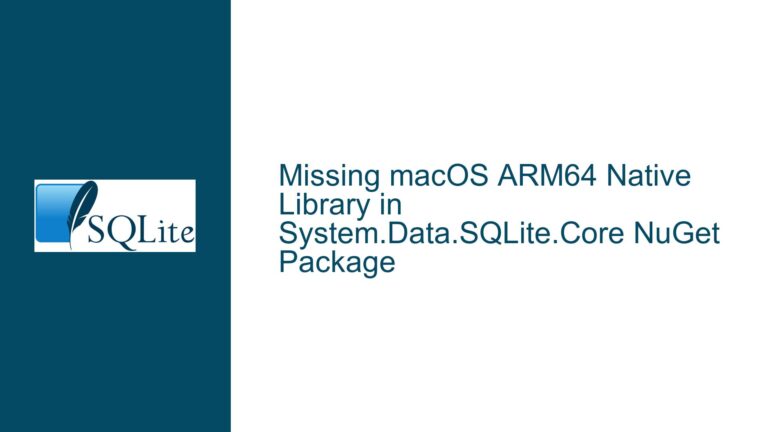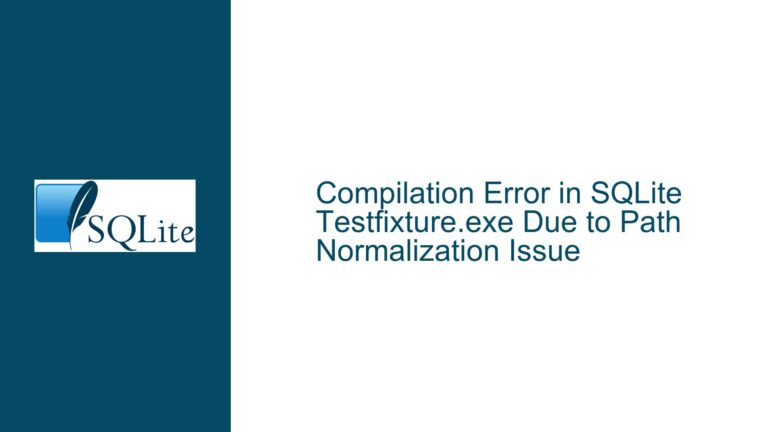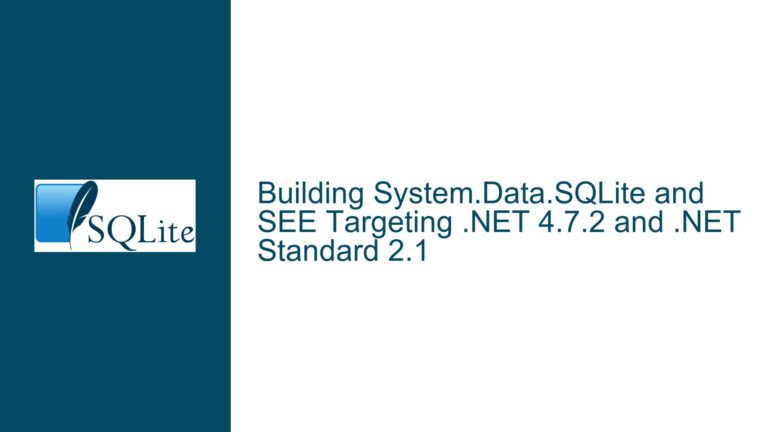Enhancing SQLite Debugging with Selective Compile-Time Options
SQLite Debugging Challenges and the Need for Selective Debugging
SQLite, as a lightweight and efficient embedded database, is widely used in various applications, from mobile devices to large-scale server systems. However, debugging SQLite can be a challenging task, especially when dealing with complex queries, internal data structures, and performance optimizations. The current debugging mechanisms in SQLite, while powerful, have several limitations that can hinder the development process.
One of the primary issues with the existing SQLite debugging system is its all-or-nothing approach. When developers enable debugging, they are often forced to include a vast amount of debug code, much of which may be irrelevant to the specific issue they are investigating. This not only slows down the execution of SQLite but can also introduce unnecessary complexity and potential interference with the normal operation of the database.
The current debugging system in SQLite relies heavily on the SQLITE_DEBUG macro, which, when enabled, includes thousands of assert() statements and other debug-related code. While these assertions are invaluable for verifying internal assumptions and ensuring the correctness of the code, they come with a significant performance overhead. Enabling SQLITE_DEBUG can slow down SQLite by a factor of three, making it impractical for use in performance-sensitive environments or during extensive test suites.
Moreover, the existing debugging options do not provide fine-grained control over which parts of the code should be debugged. For example, if a developer is only interested in tracing the execution of a specific SQL command or examining the internal parse tree structures, they must still enable all the debug code, including parts that are irrelevant to their task. This lack of selectivity can lead to longer debugging cycles and increased complexity in isolating and resolving issues.
Interrupted Write Operations Leading to Index Corruption
One of the critical challenges in SQLite debugging is the potential for database corruption, particularly in scenarios where write operations are interrupted. This can occur due to power failures, system crashes, or other unexpected events that prevent SQLite from completing a write operation. When such interruptions occur, the database may be left in an inconsistent state, leading to index corruption and other issues that can be difficult to diagnose and repair.
Index corruption is particularly problematic because it can lead to incorrect query results, performance degradation, and even complete database unavailability. In some cases, the corruption may not be immediately apparent, only manifesting itself under specific conditions or after certain operations have been performed. This makes it challenging to identify the root cause of the issue and implement an effective solution.
The current debugging mechanisms in SQLite do not provide sufficient tools for diagnosing and resolving index corruption issues. While the SQLITE_DEBUG macro can help identify some problems, it does not offer the granularity needed to trace the exact sequence of operations that led to the corruption. Additionally, the performance overhead of enabling SQLITE_DEBUG can make it difficult to reproduce the issue in a controlled environment, further complicating the debugging process.
To address these challenges, a more selective and efficient debugging system is needed. Such a system would allow developers to enable only the specific debug options that are relevant to their investigation, reducing the performance impact and making it easier to isolate and resolve issues. This would be particularly beneficial in scenarios where database corruption is suspected, as it would enable developers to trace the exact sequence of operations that led to the issue and implement targeted fixes.
Implementing PRAGMA journal_mode and Database Backup
To mitigate the risks of database corruption and improve the overall robustness of SQLite, it is essential to implement best practices for database maintenance and recovery. One such practice is the use of the PRAGMA journal_mode command, which controls how SQLite handles transaction logging and recovery. By configuring the journal mode appropriately, developers can reduce the likelihood of database corruption and improve the chances of successful recovery in the event of an interruption.
The PRAGMA journal_mode command supports several modes, including DELETE, TRUNCATE, PERSIST, MEMORY, and WAL (Write-Ahead Logging). Each mode has its advantages and trade-offs, and the choice of mode depends on the specific requirements of the application. For example, the WAL mode is particularly well-suited for applications that require high concurrency and low-latency writes, as it allows multiple readers and writers to access the database simultaneously without blocking each other.
In addition to configuring the journal mode, it is also important to implement regular database backups. Backups provide a safety net in the event of database corruption, allowing developers to restore the database to a known good state and minimize data loss. SQLite provides several mechanisms for creating backups, including the sqlite3_backup API and the .dump command, which generates a SQL script that can be used to recreate the database.
When implementing database backups, it is important to consider the frequency and scope of the backups. Frequent backups reduce the risk of data loss but may introduce additional overhead, while less frequent backups may result in larger data loss in the event of a failure. The scope of the backups should also be considered, as backing up only the most critical data can reduce the storage requirements and improve the efficiency of the backup process.
In conclusion, enhancing the debugging capabilities of SQLite through selective compile-time options can significantly improve the development and maintenance of SQLite-based applications. By providing fine-grained control over the debug code, developers can reduce the performance impact of debugging and more effectively isolate and resolve issues. Additionally, implementing best practices such as configuring the journal mode and performing regular database backups can help mitigate the risks of database corruption and improve the overall robustness of the system. These improvements, combined with a thorough understanding of SQLite’s internal workings, can lead to more reliable and efficient applications.






